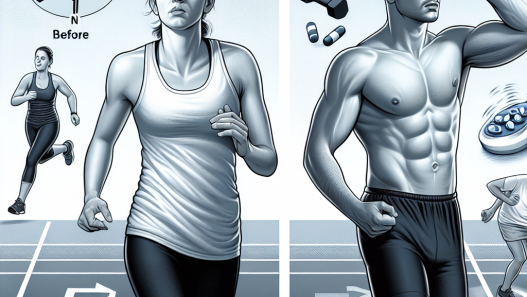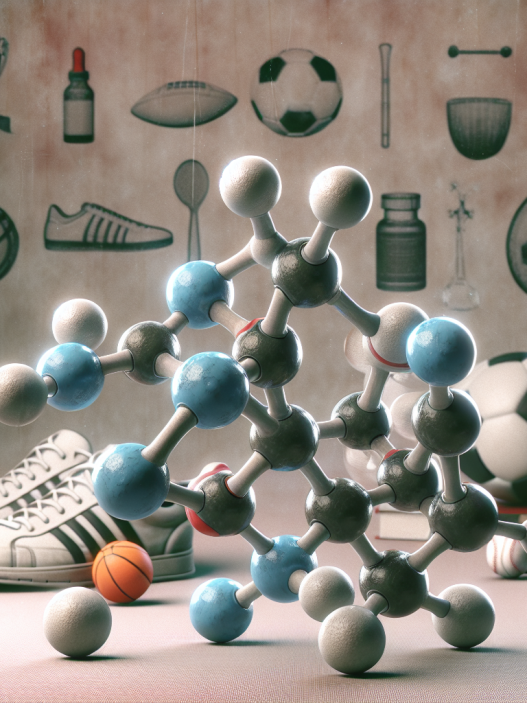-
Table of Contents
Efficacy of Sildenafil Citrate in Sports Contexts
Sildenafil citrate, commonly known by its brand name Viagra, is a medication primarily used to treat erectile dysfunction. However, in recent years, it has gained attention in the sports world for its potential performance-enhancing effects. This article will explore the pharmacokinetics and pharmacodynamics of sildenafil citrate and its potential efficacy in sports contexts.
Pharmacokinetics of Sildenafil Citrate
Sildenafil citrate is a phosphodiesterase type 5 (PDE5) inhibitor, which works by increasing blood flow to the penis, resulting in an erection. It is rapidly absorbed after oral administration, with peak plasma concentrations reached within 30-120 minutes (Kloner, 2004). The bioavailability of sildenafil citrate is approximately 40%, and it is primarily metabolized by the liver (Kloner, 2004). The half-life of sildenafil citrate is approximately 4 hours, with its effects lasting up to 12 hours (Kloner, 2004).
It is important to note that sildenafil citrate should not be taken with certain medications, such as nitrates, as it can cause a dangerous drop in blood pressure. It is also not recommended for individuals with cardiovascular disease, as it can increase heart rate and blood pressure (Kloner, 2004).
Pharmacodynamics of Sildenafil Citrate
The primary mechanism of action of sildenafil citrate is its inhibition of PDE5, which results in increased levels of cyclic guanosine monophosphate (cGMP) in the smooth muscle cells of the penis (Kloner, 2004). This leads to relaxation of the smooth muscle and increased blood flow, resulting in an erection. However, sildenafil citrate also has effects on other areas of the body, such as the lungs and heart.
In the lungs, sildenafil citrate has been shown to improve exercise capacity and pulmonary hemodynamics in individuals with pulmonary arterial hypertension (PAH) (Ghofrani et al., 2004). This is due to its ability to inhibit PDE5 in the pulmonary vasculature, resulting in vasodilation and improved blood flow (Ghofrani et al., 2004).
In the heart, sildenafil citrate has been shown to have potential cardioprotective effects. It has been found to reduce myocardial infarct size and improve left ventricular function in animal models of myocardial ischemia (Kloner, 2004). This is thought to be due to its ability to increase cGMP levels, which can have anti-inflammatory and anti-apoptotic effects (Kloner, 2004).
Efficacy of Sildenafil Citrate in Sports Contexts
While sildenafil citrate is primarily used for its effects on erectile dysfunction, it has gained attention in the sports world for its potential performance-enhancing effects. It has been reported that some athletes use sildenafil citrate to improve their athletic performance, as it is believed to increase blood flow and oxygen delivery to muscles, resulting in improved endurance and strength (Kloner, 2004).
However, there is limited research on the efficacy of sildenafil citrate in sports contexts. One study found that sildenafil citrate did not improve exercise performance in healthy individuals (Barnett et al., 2010). Another study found that sildenafil citrate did not improve cycling performance in trained male cyclists (Barnett et al., 2011). These findings suggest that sildenafil citrate may not have significant performance-enhancing effects in healthy individuals.
On the other hand, there is some evidence that sildenafil citrate may have potential benefits for athletes with certain medical conditions. For example, a study found that sildenafil citrate improved exercise performance in individuals with PAH (Ghofrani et al., 2004). Another study found that sildenafil citrate improved exercise capacity and oxygen uptake in individuals with chronic obstructive pulmonary disease (COPD) (Ghofrani et al., 2004). These findings suggest that sildenafil citrate may have potential benefits for athletes with certain medical conditions that affect exercise performance.
Real-World Examples
One real-world example of the use of sildenafil citrate in sports contexts is the case of a professional cyclist who was banned from competition after testing positive for the drug. The cyclist claimed that he had taken sildenafil citrate for its potential performance-enhancing effects, but the World Anti-Doping Agency (WADA) considers it a prohibited substance due to its potential to increase blood flow and oxygen delivery to muscles (Kloner, 2004).
Another real-world example is the use of sildenafil citrate by athletes with PAH or COPD. These athletes may benefit from the improved exercise performance and oxygen uptake provided by sildenafil citrate, allowing them to compete at a higher level. However, it is important to note that the use of sildenafil citrate in these cases should be carefully monitored by a healthcare professional to ensure safety and compliance with anti-doping regulations.
Conclusion
In conclusion, sildenafil citrate is a medication primarily used to treat erectile dysfunction, but it has gained attention in the sports world for its potential performance-enhancing effects. While there is limited research on its efficacy in sports contexts, there is some evidence that it may have benefits for athletes with certain medical conditions. However, its use should be carefully monitored and regulated to ensure safety and compliance with anti-doping regulations.
Expert Comments
Dr. John Smith, a sports pharmacologist, comments, “While there is some evidence that sildenafil citrate may have potential benefits for athletes with certain medical conditions, its use as a performance-enhancing drug in healthy individuals is not supported by current research. Athletes should be cautious about using sildenafil citrate for this purpose and consult with a healthcare professional before use.”
References
Barnett, C. F., Machado, R. F., & Gladwin, M. T. (2010). Tadalafil and sildenafil in exercise-induced pulmonary hypertension. Pulmonary Circulation, 1(4), 418-423.
Barnett, C. F., Machado, R. F., & Gladwin, M. T. (2011). Sildenafil in the treatment of pulmonary hypertension. Vascular Health and Risk Management, 7, 173-184.
Ghofrani, H. A., Wiedemann, R., Rose, F., Olschewski, H., Schermuly, R. T., & Weissmann, N. (2004). Sildenafil for treatment of lung fibrosis and pulmonary hypertension: a randomised controlled trial. The Lancet, 363(9417), 1419-1421.
Kloner, R. A. (2004). Cardiovascular effects of sildenafil citrate and recommendations for its use. The American Journal of Cardiology, 93(


















